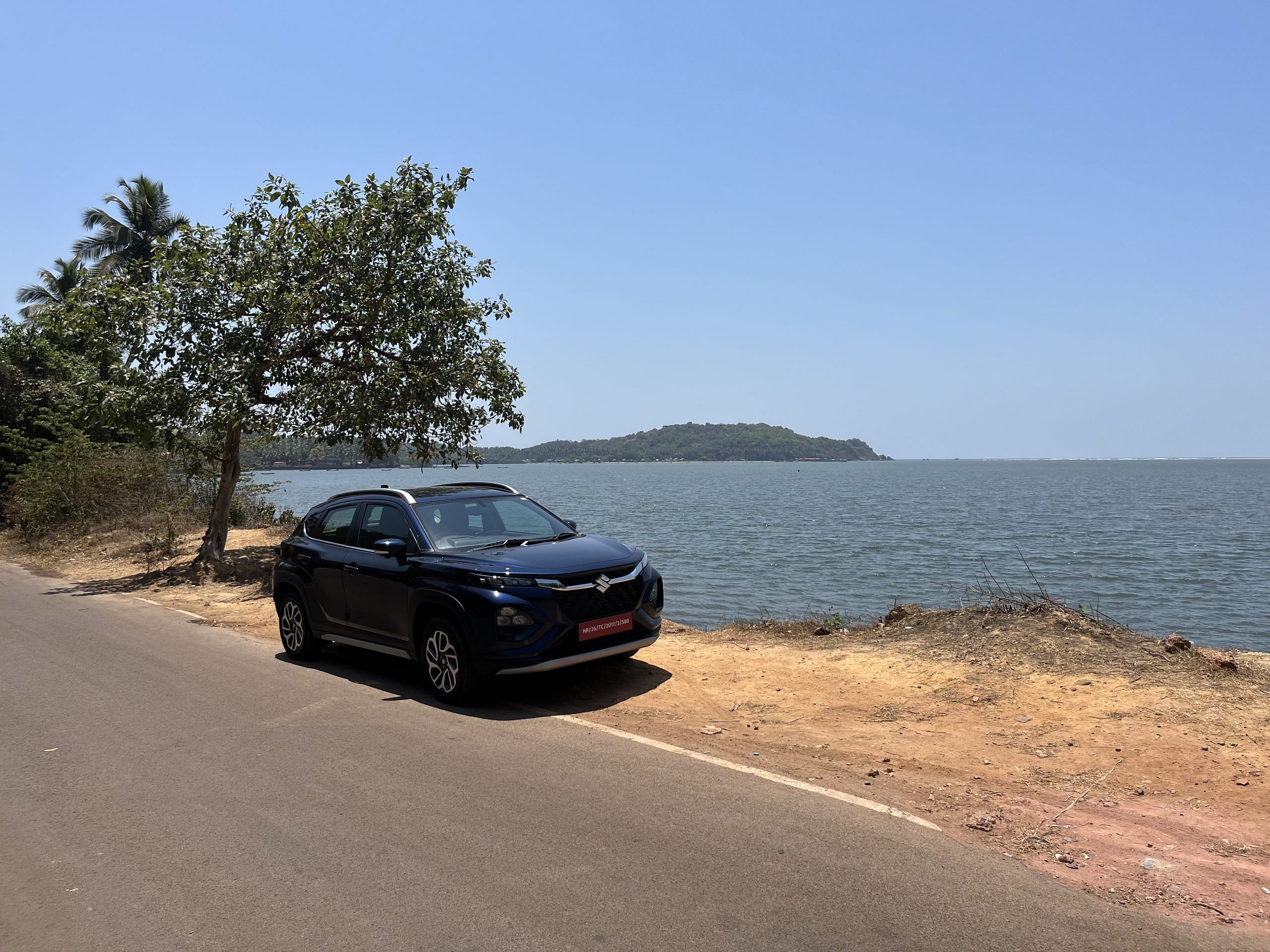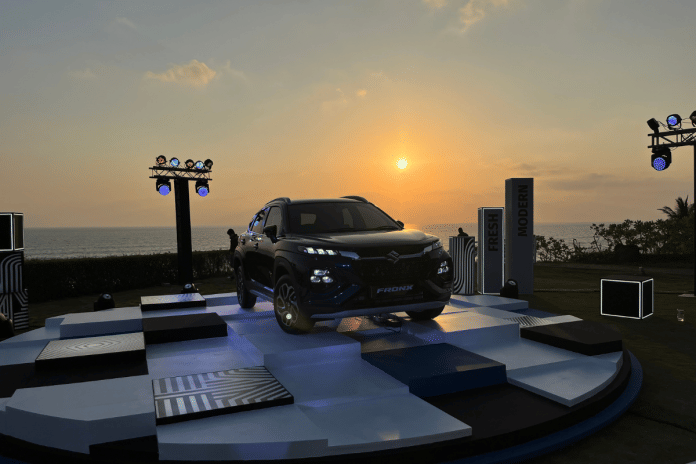Let me address the elephant in the room first. What sort of a name is ‘Fronx’? I mean, it isn’t the ‘Fronx from the Bronx’ as I might have wanted it to be, but a more mundane portmanteau of ‘Frontier’ and ‘Next’ according to Maruti Suzuki. That apart, how do you describe the Fronx, the carmaker’s latest offering from its Nexa premium showrooms?
The short and curt answer would be that it is nothing but an ‘SUV-ised’ variant of the Baleno hatchback. But that would be doing the Fronx a disservice. It looks more like a fusion of the Grand Vitara and Baleno. The Fronx certainly looks the part of an SUV with the big grille, silver running boards, and aggressively flared wheel arches. From the outside at least, it looks a lot bigger than a sub-four-metre vehicle.
But the Fronx drives as a small Maruti hatchback should — it is peppy and fun, has precise handling, and a verve that you do not get from an SUV. This is clearly, to use the automotive description, a crossover. And that was evident on the Fronx Canvas, a series of off-road tests at HillTop Goa, a venue for psychedelics-fuelled parties and now a place to have fun with cars.
In one of the tests on a winding track that looked like a coiled snake from above, the Fronx proved itself very agile indeed.

I even managed some handbrake turns through the sharp corners. One of the other tests was to go in reverse in a totally blacked-out car using only the cameras, which was extremely disconcerting, possibly even claustrophobic. I have genuinely, in a quarter of a century of driving, never felt so uncomfortable in a vehicle. Yes, the 360-degree camera is a useful addition, but remember, never solely use a camera while reversing in the real world.
Also read: Fun, fast, spacious — the new Hyundai Verna can be the answer to the…
Behind the peppy drive
Beyond the looks and the handling of the Fronx, the main reason I wanted to try it out was to test its new one-litre turbocharged BoosterJet engine. This is the first time the engine has been introduced after BS6 emissions norms came into force in April 2020. It was earlier fitted on the first-generation Baleno RS. The trend of adopting small turbocharged engines is evident across all brands, and Maruti Suzuki has rejoined the party after a hiatus of almost four years. This small engine produces 100 PS of power, less than that of similar turbocharged engines from Hyundai and Tata Motors.
That said, the engine is a peppy little unit.
On the streets of Goa, which are a mix of really narrow roads and a modern six-lane expressway scything across the state, the engine, coupled with a five-speed manual or a six-speed automatic (a traditional torque-converter unit), really urges you to push the car. With its nice cornering ability, the Fronx lets you easily cruise down the emptier yet twisty roads in the extreme north of Goa.
I even found myself going on a discovery, taking a car ferry across the Terekhol river to the border with Maharashtra. I drove down to the brilliant beaches that were interspersed with small forts and were the battlegrounds for the Maratha and Portuguese navies a few centuries ago. The Fronx felt like the perfect car for such a ride. At times on the automatic, I was using the flappy paddles to change gears because I was enjoying myself, and well, the automatic gear changes are optimised to be economical, it’s not for fun.
Also read: New Hyundai Verna spells death of diesel sedans in India. And the industry did…
A good time for Maruti
Let us get some other things out of the way too. The Fronx is not as roomy as the Brezza, which is also a sub-four-metre vehicle. While the Fronx tries hard to not look like a Baleno, the interiors are pretty much the same, from the seats to the space. There is something about this car that reminds me of the Hyundai’s old i20 Active, which served a similar role on the second-generation i20.
Carmakers are now increasingly following a new trend of putting multiple body styles on a single platform. This is to attract a fragmented market with a smaller investment. Also, while the new engine was great, I did not drive the version of the car that had the naturally-aspirated 90 PS dual-jet engine, which I suspect will sell more not just because of the marginally better fuel economy but also because it is likely to be cheaper.
Although Maruti officials indicated to me that the BoosterJet engine will be exclusive to the Fronx for now, it would be a great addition to cars like the Baleno and Swift. But because it is being made in India — for the first time — maybe it could see service on other models sooner rather than later.
The car market is having its time in the sun, and cars like the Fronx can keep the good times going for Maruti Suzuki, whose premium Nexa retail sales crossed the 2-million-unit mark in India in March this year.
@kushanmitra is an automotive journalist based in New Delhi. Views are personal.
(Edited by Humra Laeeq)






